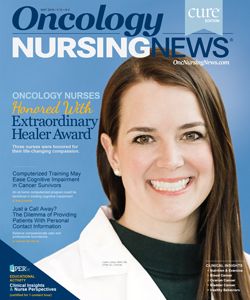Oncology Nurses: Have You Read a Good Book Lately?
“In hindsight, I understood the science behind why the trials were being conducted, but probably did not appreciate their history.”
I love to read and am always reading something. As an oncology nurse for 30 years, more than half of which were spent as a clinical trials nurse, I needed to read to keep up with the fast-paced healthcare environment. However, sometime during those years, I rarely had a chance to appreciate everything that I was reading. Now, as a PhD student at Duquesne University School of Nursing, I am reading more than ever. My doctoral education has been a turning point that led me to start appreciating what I was reading instead of reading because I had to learn something new to keep pace. These readings led me to The Emperor of All Maladies: A Biography of Cancer by Siddhartha Mukherjee, MD, DPhil.
I would encourage anyone who works in the oncology world to read it. In my opinion, it is an amazing book and certainly worthy of the Pulitzer Prize that it won in 2011.
Mukherjee wrote the book during his medical oncology fellowship at Dana-Farber Cancer Institute in Boston. He takes you on a journey that consolidates piecemeal learning about cancer into a unified perspective about the disease. The book is written as a biography and replays the history of cancer from the first known sources of documentation of the disease. This history allows us to understand events in the context of our society and, more specifically, medical evolution.
As an oncology nurse, I had basic knowledge of cancer. I began working as a registered nurse in 1988, a time when most chemotherapy was administered on an in-patient basis. After completing a chemotherapy course, I understood what chemotherapy was and how it worked, as well as how the treatments affected my patients and how I could manage their adverse events. What I did not know was how oncology care evolved to the place where chemotherapy was no longer considered a one-size-fits-all therapy.
For example, Sidney Farber, MD, made significant advancements in the field. He knew it would take community involvement and advocacy to move the science forward. The Jimmy Fund, established in 1948 to raise money to help fund research, is an example of such advocacy. We raise money for all sorts of cancer projects in today’s environment, but have you ever stopped to appreciate who helped spur these early philanthropic efforts? Another early “influencer,” Mary Lasker, is also included in Mukherjee’s book. It is amazing to me that in the mid 20th century, when women were still primarily working in the home, she united those around her to help her advance medical research. She was instrumental in moving the research efforts of the American Cancer Society forward, as well as influencing Congress to fund research. Through their pioneering efforts, both Farber and Lasker laid a solid foundation upon which oncology care has continued to advance. It is difficult to appreciate the synergistic contributions of these 2 leaders without knowing their full history.
As a clinical trials nurse, I had the unique opportunity to be involved in groundbreaking trials, from the first tests with paclitaxel (Abraxane), cetuximab (Erbitux), and trastuzumab (Herceptin) to the cancer prevention trials whose results demonstrated the value of tamoxifen against breast cancer in certain high-risk populations. In hindsight, I understood the science behind why the trials were being conducted, but probably did not appreciate their history. Mukherjee takes you through the early studies that linked cancer with environmental exposures such as smoking. He also discusses the development of diagnostic tests, such as the Pap smear.
Pharmaceutical development is also addressed in this book. How scientists discovered linkages to genetic and genomic information and disease responses is unbelievable at times. Mukherjee describes how Genentech almost dropped development of trastuzumab. If it were not for the persistence of Dennis Slamon, MD, PhD, and his discovery linking HER2 activity in breast cancer, we might not have trastuzumab. Mukherjee describes how Slamon personally called a woman with highly amplified HER2 and asked her to participate in the early trials of the drug. She initially refused, but after a second phone call from Slamon, she agreed to participate. Although in 1993 the woman thought she had only months to live, she was alive and well as of the publication of the book.
For me, reading this book was an amazing journey that enabled me to link everything that I already knew into a clearer image of cancer. However, history is yet to be written, as the global community, advocacy groups, and the scientific world continue to battle this everchanging disease. The incredible part is that targeted cancer therapy is the last “type” of therapy described in the book. Just imagine the advances that are yet to be discovered.
KELLY FILCHNER, MSN, RN, OCN, CCRC is a PHD STUDENT AT DUQUESNE UNIVERSITY SCHOOL OF NURSING
Reference
Mukherjee S. The Emperor of All Maladies: A Biography of Cancer. New York, NY: Scribner; 2010.




